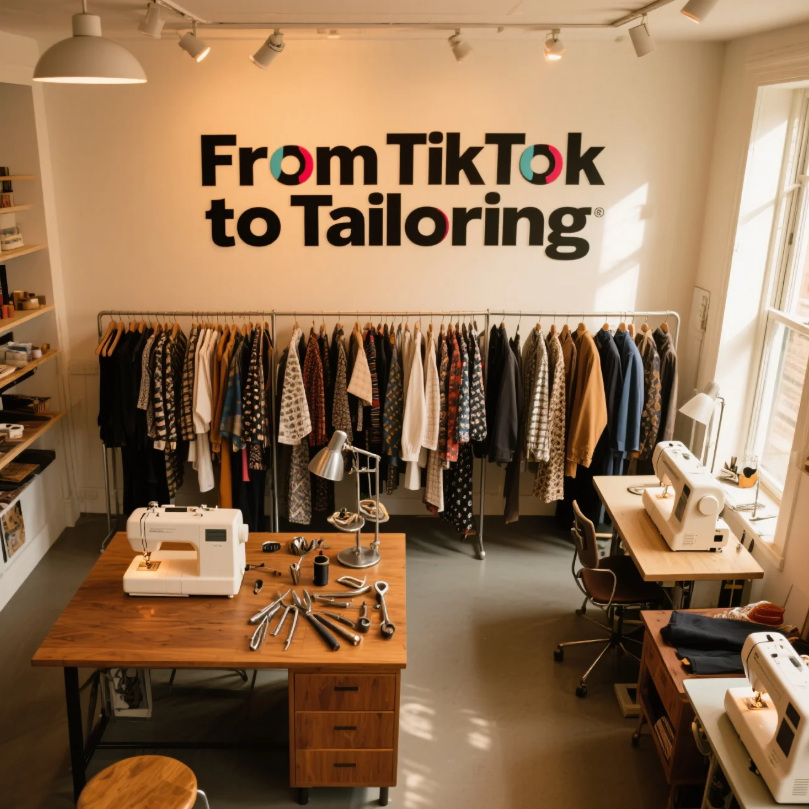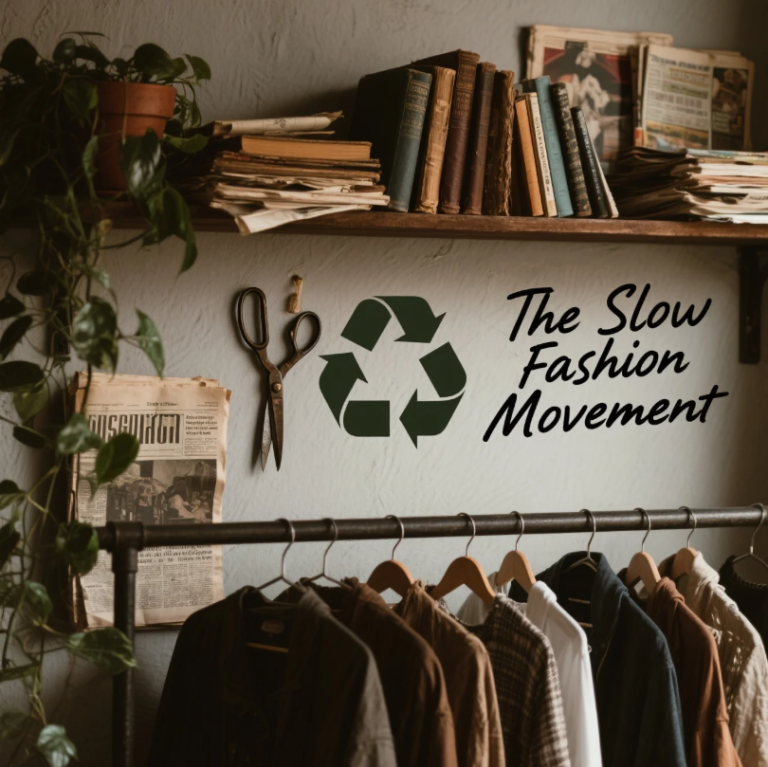
When you think of Gen Z and fashion, what springs to mind? Flashy trends? Viral TikTok dances? Well, buckle up, because there’s a quiet revolution happening — and it’s anything but fast. Gen Z, the generation born roughly between 1997 and 2012, is rewriting the fashion rulebook with a deep love for slow fashion. Not through designer labels or runway shows, but through thrift store treasures and DIY flair. Yes, these young trendsetters are turning their smartphones into sewing machines and their secondhand hauls into runway-ready masterpieces.
If you thought slow fashion was just for hipsters with ironic glasses and organic tea, think again. From TikTok tutorials that make tailoring sexy to thrift shop hauls that save the planet (and your wallet), Gen Z is transforming how we think about style. This isn’t your grandma’s notion of “slow” — it’s a full-blown cultural reset where sustainability meets swagger. Ready to dive in? Let’s unravel this tapestry of thrift and creativity.
The TikTok Tailoring Takeover
Scrolling through TikTok, you might stumble on a video of someone transforming a pair of thrifted jeans into a one-of-a-kind crop top, or turning an oversized blazer into a chic mini dress. These DIY videos aren’t just fun to watch — they’re sparking a massive slow fashion movement.
Why TikTok? Because it’s where Gen Z learns, experiments, and shares their creativity. The platform’s bite-sized, visually compelling content is perfect for quick sewing hacks and styling tips. Suddenly, sewing machines aren’t relegated to dusty closets; they’re the must-have gadgets in bedrooms and dorms.
Creators like @DIYDarlings and @SewSavvy have turned needle and thread into the new cool. With tutorials ranging from simple hemming hacks to full-on garment reconstruction, they’re democratizing fashion craftsmanship. This encourages a mindset shift: why buy new when you can refashion old? Plus, it’s a lot more fun to say you made your jacket from a 90s thrift store find.
Thrift Shopping: The New Luxury
Once considered the domain of bargain hunters or retro enthusiasts, thrift shopping has exploded into a cultural phenomenon. But Gen Z doesn’t just thrift for nostalgia or necessity — they see it as an act of rebellion against the overconsumption that fast fashion fuels.
Thrift stores and online resale platforms like Depop and Poshmark have become the ultimate playgrounds for creative expression. Instead of following mass-produced trends, young shoppers hunt for unique pieces with history and character. The thrill? Finding that one jacket with perfect vintage vibes or a quirky pattern that no one else has.
This approach transforms shopping into a treasure hunt. Every item has a story, every outfit a personal stamp. It’s slow fashion that’s rich in personality and purpose.
The Magic of Upcycling
Gen Z’s commitment to sustainability doesn’t stop at buying secondhand. They are also masters of upcycling — taking old clothes and turning them into new fashion statements. Upcycling involves creativity, resourcefulness, and a little bit of magic (and maybe some hot glue).
Whether it’s turning dad’s old shirt into a trendy halter top or using fabric scraps to make eye-catching patches, upcycling gives garments a second life. It’s like breathing fresh style into something forgotten, while cutting down on waste.
The best part? Upcycling challenges the “disposable” mindset. Instead of tossing clothes, these young innovators show that fashion can be endlessly reimagined. Plus, nothing beats the pride of wearing something uniquely yours, stitched with your own hands.
Tailoring as Self-Expression
What’s most exciting about this slow fashion resurgence is how tailoring — once seen as tedious or elitist — is now a bold form of self-expression for Gen Z.
Sewing your own clothes or altering thrift finds isn’t just practical; it’s empowering. Tailoring puts style decisions back into the wearer’s hands. Want wider sleeves? Done. Crop your jeans into shorts? Easy. Add glitter or embroidery? Absolutely.
This DIY culture encourages experimentation without the guilt of waste. It’s slow fashion’s answer to fast fashion’s “wear once, toss” mentality. Plus, tailored clothes fit better, feel better, and often last longer — a triple win.
The Social Impact: More Than Just Clothes
Slow fashion for Gen Z isn’t just about looking good — it’s about doing good. By thrifting and tailoring, this generation is sending a loud message to the fashion industry and society:
- Less Waste: Fast fashion is one of the biggest polluters globally. Gen Z’s choices reduce textile waste and slow down the cycle of constant production.
- Economic Empowerment: Resale platforms give young entrepreneurs a chance to monetize their unique finds or handmade creations.
- Community Building: Sharing tips, swaps, and styles on social media fosters a supportive community united by shared values.
- Mental Wellness: Embracing slow fashion encourages mindfulness and creativity, providing a healthy counterbalance to consumerist pressures.
Challenges on the Road to Slow Fashion
Of course, no revolution is without its hurdles. Slow fashion requires time, patience, and skills that not everyone has (yet!). Learning to sew or upcycle takes effort, and not every thrift find turns into a masterpiece.
Moreover, accessibility can be an issue. Not everyone has a thrift store nearby or the means to buy secondhand online. And let’s be honest: sometimes that vintage jacket is a size too small or covered in questionable stains.
But here’s the thing: Gen Z is persistent. With endless tutorials, online communities, and a spirit of innovation, they’re making slow fashion more accessible day by day.
Fashion Forward: The Lasting Impact
The slow fashion movement powered by Gen Z isn’t a passing fad — it’s a seismic shift in how we view style, sustainability, and self-expression. By blending technology, creativity, and conscientious consumerism, they’re rewriting the fashion narrative.
Brands are noticing. Luxury labels and mainstream retailers alike are beginning to embrace sustainable lines, recycling programs, and collaborations with upcycling artists. It’s clear the future of fashion lies not in the speed of trends, but in the stories behind the clothes.
How You Can Join the Slow Fashion Movement
If you’re inspired by Gen Z’s slow fashion revolution, here are some easy ways to get started:
- Visit Your Local Thrift Store: Channel your inner treasure hunter and find unique pieces that tell a story.
- Try a DIY Project: Start small with simple alterations or embellishments like patches or tie-dye.
- Learn to Sew: Plenty of online tutorials can get you started. Who knows? Your next favorite outfit could be handmade.
- Shop Resale Online: Platforms like Depop, ThredUp, and Poshmark are gold mines for sustainable style.
- Support Slow Fashion Brands: Invest in quality pieces that last longer, even if they cost a little more upfront.
Final Stitch: Slow Fashion Isn’t Just a Trend — It’s a Movement
From the screens of TikTok to the racks of thrift stores, Gen Z is stitching a new future for fashion — one where creativity, sustainability, and individuality reign supreme. Their embrace of DIY culture and thrift shopping is turning slow fashion from a niche ideal into a vibrant lifestyle. So next time you spot a pair of upcycled jeans or a thrifted blazer turned masterpiece, remember: you’re witnessing the stylish revolution that could just save the planet. And honestly, isn’t that the most fashionable thing of all? 🌿✨



